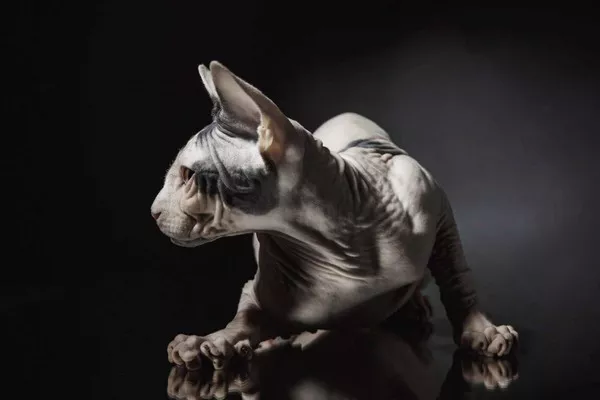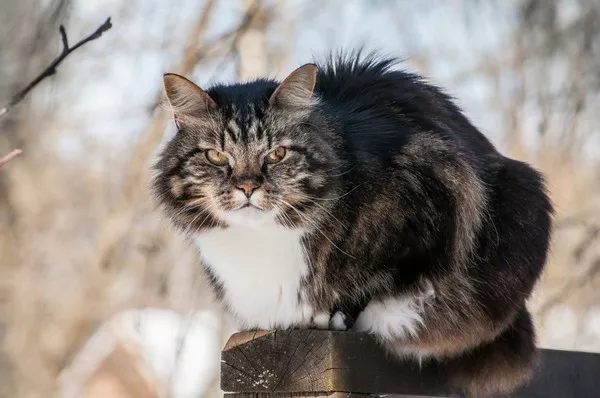Hairless cats are a unique and fascinating breed known for their distinctive appearance and loving personalities. Unlike most cats that boast luxurious fur coats, hairless cats stand out with their naked skin, wrinkled features, and large, expressive eyes. Their captivating looks have drawn the attention of cat enthusiasts worldwide, sparking interest in understanding the breed’s origins, characteristics, and special care requirements. In this article, we will explore the captivating world of hairless cats, shedding light on their history, different breeds, and what makes them extraordinary companions for cat lovers.
The Origins of Hairless Cats
The history of hairless cats dates back centuries, with evidence of similar cats appearing in various parts of the world. The most well-known breed of hairless cats, the Sphynx, can be traced back to the 1960s in Canada. A domestic cat named Elizabeth gave birth to a hairless kitten, which marked the start of the breed’s development. Selective breeding efforts led to the establishment of the Sphynx breed, known for its hairless appearance and affectionate personality.
While the Sphynx is the most recognized hairless cat breed, there are other variations and mutations that result in hairlessness. For example, the Peterbald cat, developed in Russia during the 1990s, is another popular hairless breed known for its unique coat variations and elegant appearance.
Hairlessness and Genetics
The hairlessness of these cats is the result of a natural genetic mutation. Unlike some other breeds with naturally short fur, hairless cats possess a recessive gene that prevents them from growing a full coat of fur. This genetic trait influences their skin’s appearance, which can vary from smooth and velvety to slightly wrinkled or with a thin layer of fuzz.
It’s essential to note that not all hairless cats are completely bald; some may have sparse fur on certain parts of their bodies, such as the ears, nose, tail, or paws. Additionally, some hairless cat breeds may have seasonal changes in their coat, where they may develop a thin layer of fur during colder months.
Hairless Cat Breeds
There are several hairless cat breeds, each with its unique characteristics and appeal. Let’s explore some of the most popular hairless cat breeds:
1. Sphynx: The Sphynx is the most well-known hairless cat breed. It has a hairless body, large ears, and a muscular build. The breed’s skin may have a slight texture, and they come in various colors and patterns. Sphynx cats are highly social, affectionate, and enjoy human interaction.
2. Peterbald: The Peterbald cat originated in Russia and comes in various coat types, including hairless, velour, brush, and straight-coated. The hairless Peterbalds have a sleek, muscular body and are known for their intelligence and curiosity.
3. Donskoy (Don Sphynx): The Donskoy is a Russian hairless cat breed with a distinctive appearance, featuring wrinkled skin and large ears. They have a friendly and gentle temperament, making them wonderful companions.
4. Ukrainian Levkoy: The Ukrainian Levkoy is another Ukrainian hairless breed with unique folded ears. They have a slender, graceful appearance and are known for their affectionate and sociable nature.
Characteristics of Hairless Cats
1. Appearance: The most obvious characteristic of hairless cats is their lack of fur. Their naked skin is often warm to the touch, and their bodies may have some wrinkling, particularly around the joints. They have a slender and graceful appearance, with some breeds having muscular builds.
2. Temperament: Hairless cats are generally known for their affectionate and social nature. They enjoy human interaction and are often described as “lap cats” because they love cuddling with their owners. These cats are intelligent, curious, and often exhibit a playful demeanor.
3. Special Care Requirements: Due to their lack of fur, hairless cats have unique care requirements. They are sensitive to temperature changes and can get sunburned easily, making them indoor cats in many cases. Regular bathing is necessary to remove excess oils from their skin, and they may need special moisturizers to keep their skin hydrated.
4. Sun Protection: Hairless cats are susceptible to sunburn, especially those with lighter-colored skin. It’s essential to keep them indoors during peak sun hours and provide them with access to shaded areas when outdoors.
5. Clothing Options: Some hairless cat owners may choose to dress their cats in clothing to provide extra protection from the elements. While not all cats enjoy wearing clothes, some can benefit from wearing specially designed outfits to keep them warm and protected.
Health Considerations
Hairless cats, like all breeds, can be prone to certain health issues. Regular veterinary check-ups are crucial to monitor their overall health and address any potential concerns. Some health considerations for hairless cats include:
1. Skin Health: Due to their lack of fur, hairless cats may be more prone to skin infections, sunburn, and dryness. Regular skin checks and proper skincare are essential to maintain their skin health.
2. Dental Health: Dental care is crucial for all cats, including hairless breeds. Regular teeth brushing and dental check-ups can help prevent dental issues.
3. Ear Health: Some hairless cat breeds, such as the Sphynx, may have larger ears, making them prone to earwax buildup and ear infections. Regular ear cleaning is necessary to maintain ear health.
Conclusion
Hairless cats are a captivating and unique group of felines that have captured the hearts of cat lovers worldwide. Their distinct appearance, affectionate personalities, and special care requirements make them extraordinary companions for those willing to invest the time, effort, and love to meet their needs. As with all pets, responsible ownership and regular veterinary care are essential to ensure these hairless wonders lead happy and healthy lives in their loving forever homes.

























